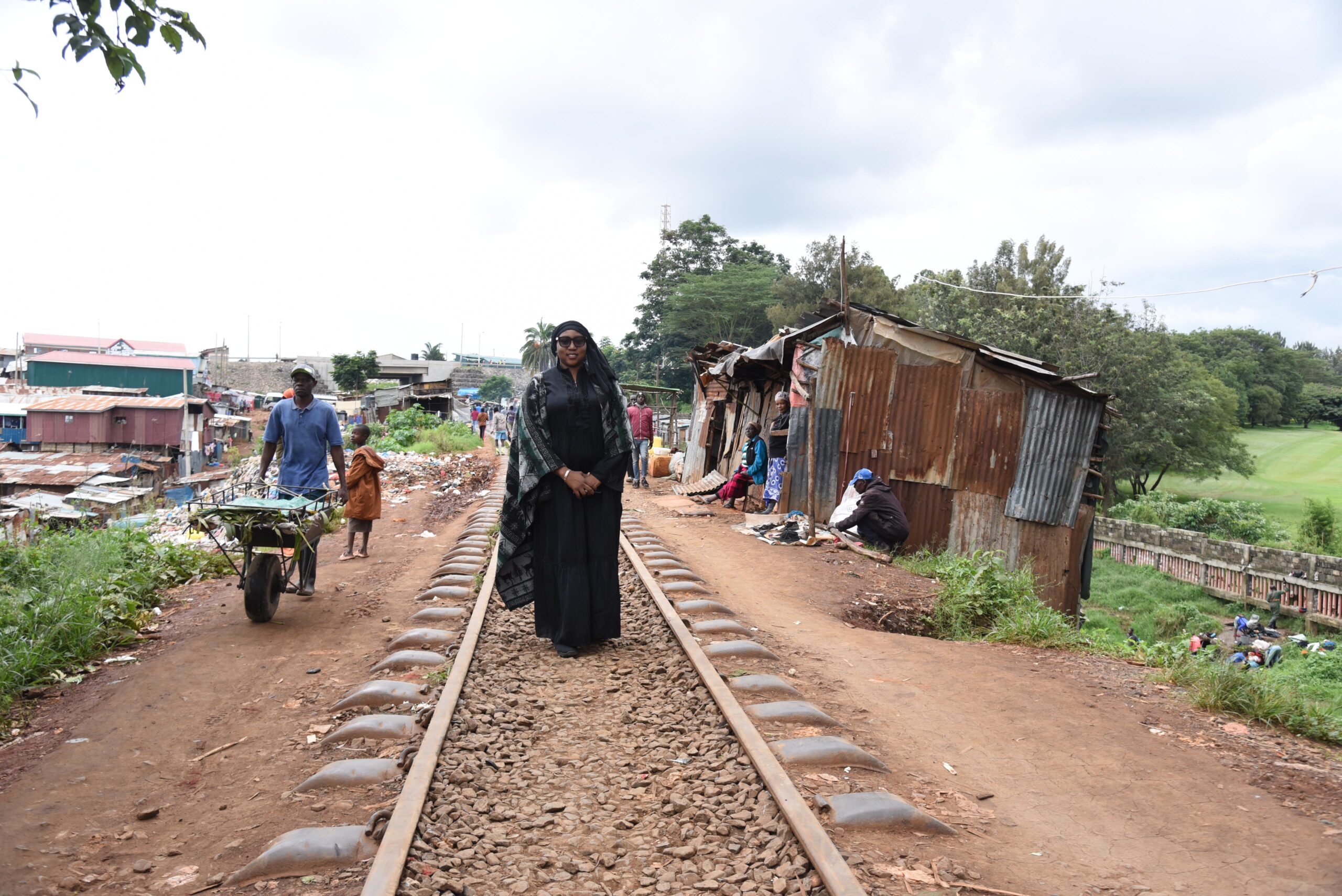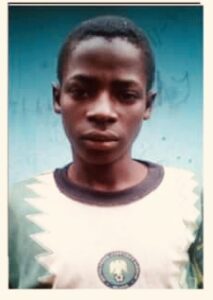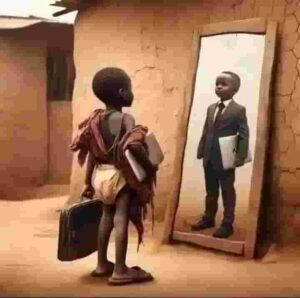“Whispers of Hope: A Journey Through Nairobi’s Kibera Slum”
“My name is Mrs. Gotname Ibrahim, a Nigerian woman raised in the Northern part of Nigeria. I feel grateful and privileged to represent the Hasken Arewa Foundation alongside my husband as we partner with ‘CRY,’ an NGO that collaborates with us financially to provide care and relief to out-of-school children and young women in northern Nigeria. As our plane descends into Kenya, my mind alternates between anticipation of what could be and nostalgia for home. Yet, my heart prevails over my mind as it envisions the potential of the amalgamation of servant-hearts, leading to the possibility of education and the transformative power of kingdom-minded humanitarian endeavors. The theme for this year’s CRY educational forum resonates in my mind like an untamed Nigerian talking drum: ‘It takes a village to raise a child.’ I am filled with gratitude for the tireless love and dedication of our brothers and sisters Aime, Kezi, Chris, and the entire staff of ‘CRY.'”
In the heart of Nairobi, a vibrant city pulsating with life and energy, lies Kibera, a slum that stands as a testament to the resilience and spirit of its inhabitants. It was here, amidst the juxtaposition of wealth and poverty, that I embarked on a transformative journey that would forever alter my perspective on community, dimension of poverty, resilience, and the power of Education. The bustling streets of Nairobi welcomed me with open arms, each corner teeming with the rhythm of life – a symphony of voices, colors, and smells that enveloped me in a sense of wonder and excitement. As I made my way to Kibera, the contrasts became stark. The once bustling streets gave way to narrow alleys flanked by corrugated iron shacks, their roofs decorated with a rusted chocolate roofs, this is were it got it’s name “Chocolate City” a stark reminder of the resilience and hope that thrived within these humble homes. The biggest urban slum in Africa, 2.5 square kilometers of land with a staggering population of approximately 2.5 million slum dwellers in about 200 settlements in Nairobi representing 60% of the Nairobi population and occupying just 6% of the land. Kibera houses about 250,000 of these people.
The conference, “It Takes a Village to Raise a Child,” brought together representatives from various NGOs dedicated to educating children and uplifting the vulnerable in society. It was a gathering of minds and hearts, each person driven by a shared purpose – to make a difference in the lives of those who needed it the most. Entering Kibera was like stepping into another world. The air was thick with the offensive scent of burning charcoal, sewage and a deafening darkness, I wondered the possibility of a dream sprung from here, the narrow pathways alive with the laughter of children playing amidst the makeshift playgrounds and dirty drains. We were greeted by half smiling adults, their eyes filled with a mixture of curiosity, warmth, discontentment and hunger, that instantly put me at ease and not at ease. A place humans pay a sum of five shillings to poop. An addiction to gambling and a drug called ‘Changga’ ravages skin to skin. Young girls having the looks of grown women, Kibera indeed spoke so loudly to this writers mind.
Walking through Kibera, guided by local volunteers and the ‘Turning Point Foundation’ who served as our hosts, I was also struck by the sense of community that permeated every aspect of life here. The narrow alleyways were lined with small businesses – tailor shops, weaving workshops, and a small market stalls where vendors peddled sweets and handmade crafts along the rail line. The vibrancy of the role of the school center, library and feeding programs of our host stood in stark contrast to the poverty and insecurity that surrounded them, a testament to the resilience and prevailing ability of a hope ignited for the people of Kibera. This classroom made of roofing sheets don’t count as the main cure to ignorance, poverty and fear but it is the women and men who have yielded to the calling to love the unlikely and one who cannot repay, it Is their passionate consistency that builds the frail minds and bodies of the children and people of Kibera. Young men like Amos Odhiambo who persevered through the help of humanitarian services on the streets of Kibera and return to give back to their community through his Academy of general arts and dance. The likes of Cedrick M. Joseph and Mullick whose camera lense paints a beautiful perspective of the potential of Kibera, dreaming to empower the next generation of creative photographers while show casing the positivity and productivity of Kibera, Samson Ndegwa Bondi teaching children to paint and explore the power of arts…their passion for education evident in every word they spoke.
I had the opportunity to touch the kids with compassionate smiles as I struggled not to cry, a mothers heart is a heart which makes room for every other child. These kids are audacious to dreams and aspirations as diverse as the colors of the rainbow. Some wanted to become, photographers, teachers, doctors, others social workers, and a few dared to dream of becoming astronauts and explorers. Their eyes shone with a mixture of hope and determination, though feeble and hungry a stark reminder of the resilience and potential that lay dormant within each of them as education ignites hope. We continued our journey through Kibera, we discussed amongst ourselves with representatives from various NGOs from different nations, who were working tirelessly to provide education, healthcare, and support to the most vulnerable members of our society. The stories of the people we impact are as diverse as the programs we all ran: from educating the out of school, maintaining orphanages, medical health care to remote villages, to vocational training programs that empowered women and kids to become entrepreneurs and breadwinners for their families and much more. And being a Servant comes with a lot of emotional spiral but we are reminded to take courage and never give up for we are playing an important role in the Kingdom plan.
The sun began to set over Kibera, casting long shadows over the bustling streets, I found myself reflecting on the day’s experiences. The resilience, hope, and sense of community that permeated every corner of the slum had left an indelible mark on my heart. I had witnessed firsthand the power of education, compassion, and collaboration in transforming lives and empowering communities to rise above adversity. The conference, “It Takes a Village to Raise a Child,” had given me a glimpse into a world where individuals from all walks of life came together to make a difference – where NGOs, volunteers, and community leaders worked hand in hand to create a brighter future for the children of Kibera and beyond. It was a reminder that no matter how daunting the challenges we face may seem, when we come together with a shared purpose and a shared vision, anything is possible. As I bid farewell to Kibera, the echoes of laughter and hope that had filled the air lingered in my soul. The children’s bright eyes and infectious smiles remained etched in my memory, a reminder of the resilience and spirit that thrived amidst the hardships of their daily lives. I left with a renewed sense of purpose and a deep appreciation for the power of community, compassion, and education in changing the world, one child at a time. Whispers of hope echoed through the dusty alleyways of Kibera, a reminder that even in the darkest of places, light and love can thrive. The journey through Nairobi’s bustling streets and the slum of Kibera had taught me that it truly takes a village – a community of kindred spirits united by a common goal – to raise a child, to nurture their dreams, and to empower them to reach for the stars.
Ultimately, I came to understand that the youth of Kibera were not mere products of their environment – they stood as beacons of hope, embodiments of resilience, and emblems of the limitless potential residing within each individual. As I made my way back to the bustling avenues of Northern Nigeria, I bore with me the teachings and recollections of Kibera. It was a locale where the human spirit radiated most brilliantly amidst challenges, and where the kindness of newfound comrades of similar aspirations enveloped me.



